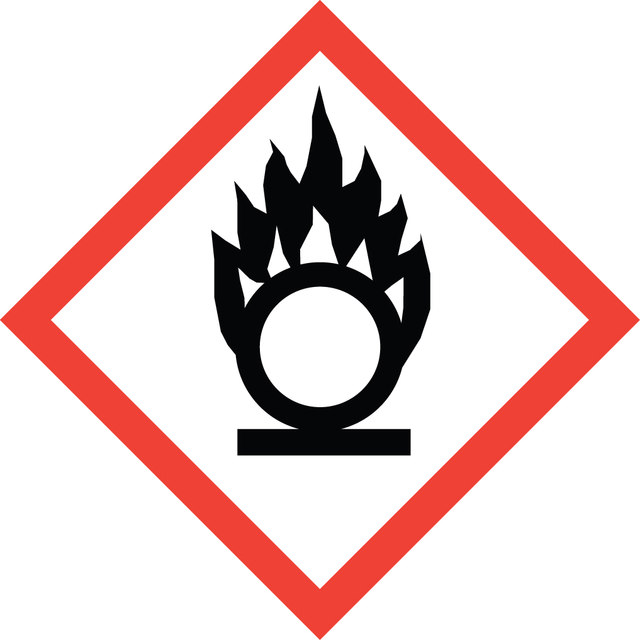Select a Size
About This Item
Quality Level
product line
EMSURE®
Assay
≥99.5% (iodometric)
form
solid
pH
5.8 (25 °C, 90 g/L in H2O)
solubility
81 g/L
density
4.28 g/cm3 at 20 °C
bulk density
1150 kg/m3
anion traces
bromide, bromate, chloride, chlorate (as Cl-): ≤0.02%
iodide (I-): ≤0.002%
sulfate (SO42-): ≤0.005%
cation traces
Cd: ≤0.00005%
Cu: ≤0.0001%
Fe: ≤0.001%
K: ≤0.02%
Mn: ≤0.00005%
N: ≤0.002%
Pb: ≤0.0002%
Zn: ≤0.0001%
storage temp.
2-30°C
SMILES string
[Na+].[I](=O)(=O)[O-]
InChI
1S/HIO3.Na/c2-1(3)4;/h(H,2,3,4);/q;+1/p-1
InChI key
WTCBONOLBHEDIL-UHFFFAOYSA-M
Related Categories
Application
- Comparative Analysis of Molecular Landscape in Mouse Models and Patients Reveals Conserved Inflammation Pathways in Age-Related Macular Degeneration.: This study highlights the use of sodium iodate to induce retinal degeneration in mouse models to explore conserved inflammation pathways relevant to age-related macular degeneration. This model provides insights into potential therapeutic targets for inflammatory diseases of the retina (Liu et al., 2024).
- The BET PROTAC inhibitor dBET6 protects against retinal degeneration and inhibits the cGAS-STING in response to light damage.: Sodium iodate was utilized to model retinal degeneration, showing the effectiveness of the BET PROTAC inhibitor dBET6 in protecting against retinal damage and modulating inflammatory responses, potentially offering new treatment avenues for retinal diseases (Zhu et al., 2023).
- Sodium Iodate-Induced Degeneration Results in Local Complement Changes and Inflammatory Processes in Murine Retina.: This research delves into the specific inflammatory processes and complement system changes following sodium iodate-induced retinal degeneration in mice, providing a detailed molecular understanding of retinal inflammatory responses (Enzbrenner et al., 2021).
- IL-33trap-mediated IL-33 neutralization does not exacerbate choroidal neovascularization, but fails to protect against retinal degeneration in a dry age-related macular degeneration model.: The study used sodium iodate to induce retinal degeneration and test IL-33 neutralization′s effectiveness in preventing retinal damage, contributing to the understanding of inflammatory pathways in retinal diseases (Van Hove et al., 2021).
- An Acute Injury Model for the Phenotypic Characteristics of Geographic Atrophy.: Utilizing sodium iodate to create an acute retinal injury model, this study mimics the phenotypic characteristics of geographic atrophy, providing a valuable tool for studying this condition and testing potential treatments (Bhutto et al., 2018).
Analysis Note
pH-value (5 %; water): 5 - 8
Chloride, Chlorate, Bromide, Bromate (as Cl): ≤ 0.02 %
Iodide (I): ≤ 0.002 %
Sulfate (SO₄): ≤ 0.005 %
Total nitrogen (N): ≤ 0.002 %
Cd (Cadmium): ≤ 0.00005 %
Cu (Copper): ≤ 0.0001 %
Fe (Iron): ≤ 0.001 %
K (Potassium): ≤ 0.02 %
Mn (Manganese): ≤ 0.00005 %
Pb (Lead): ≤ 0.0002 %
Zn (Zinc): ≤ 0.0001 %
Legal Information
Signal Word
Danger
Hazard Statements
Precautionary Statements
Hazard Classifications
Acute Tox. 4 Oral - Ox. Sol. 2 - Resp. Sens. 1 - Skin Sens. 1
Storage Class Code
5.1B - Oxidizing hazardous materials
WGK
WGK 1
Flash Point(F)
Not applicable
Flash Point(C)
Not applicable
Regulatory Information
Certificates of Analysis (COA)
Search for Certificates of Analysis (COA) by entering the products Lot/Batch Number. Lot and Batch Numbers can be found on a product’s label following the words ‘Lot’ or ‘Batch’.
Already Own This Product?
Find documentation for the products that you have recently purchased in the Document Library.
Our team of scientists has experience in all areas of research including Life Science, Material Science, Chemical Synthesis, Chromatography, Analytical and many others.
Contact Technical Service

